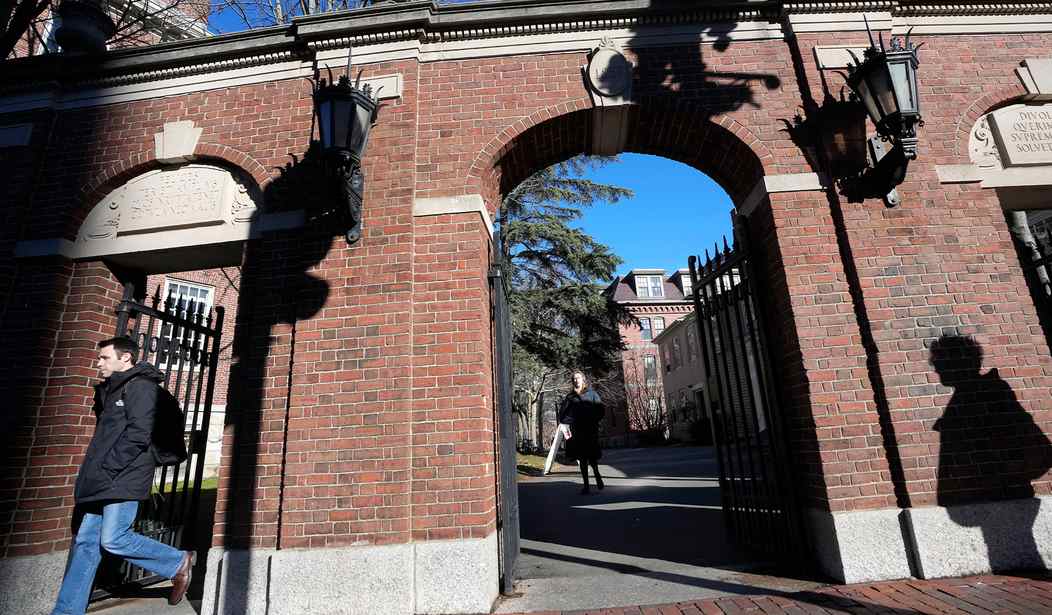It’s that time of year again -- when the letters finally arrive announcing the decisions of colleges and universities, and when countless applicants find themselves disappointed -- if not distraught -- that they were rejected by their top schools. This is particularly frequently the case when the applicants’ top choices were any of the Ivy League universities or others with a comparable reputation and/or ranking.
It’s long past time that the American public get a broader perspective on rankings and admissions in higher education.
I have been a faculty member and administrator at both the undergraduate and graduate level for 34 years. During that time, I have had ample opportunity to observe the inner workings of higher ed and have advised many individuals and families on ways to find schools that are the best fit.
The worst way to make those decisions is based upon “rankings,” which, in my opinion, are decades out of date and terribly misleading. Colleges and universities are not the same institutions they were when I attended college in the 1980s, yet the public perception has not kept up with reality. Nor have rankings.
A number of trends have dramatically changed the structure and environment of higher education, starting with affirmative action, which was in place from the 1960s until the United States Supreme Court struck down the practice as unconstitutional in the 2023 case Students for Fair Admissions v. Harvard.
Heralded as a way of remedying past discrimination, much has been written about the benefits affirmative action has bestowed upon minority populations by giving them access to colleges and universities that were once foreclosed to them. Similarly, we have heard for decades about how increasing the racial, social and cultural diversity of the student bodies has improved the college experience and the quality of the education provided by the schools themselves.
By contrast, relatively little has been said of the applicants who were, for want of a better word, displaced by the widespread implementation of admissions policies designed to increase the number of minorities accepted at the country’s finest educational institutions. Nor has there been much discussion of the schools those individuals opted to attend. If they were not accepted at the Ivies or the other top-tier institutions, where did they go?
Recommended
The answer, in many cases, is that they attended colleges and universities that were not, at the time, considered to be “top tier.”
For decades, students who were just as bright, hardworking and achievement-oriented as those who had been accepted to the “top-tier” schools did extremely well at other institutions, even if those schools were not among their top choices -- or highly ranked. They often graduated at the top of their classes. They got excellent jobs and have had successful and distinguished careers. And they have been generous in giving back to their alma maters. One notable result -- not typically captured by rankings -- has been graduating classes of increasing ability and talent, year after year, from what were once considered “middle-tier” schools.
A second trend has been for schools with strong regional reputations to expand their admissions pools to include applicants from different parts of the country. For example, big southeastern state schools like the University of Alabama, the University of Mississippi, the University of Florida and Florida State University that once drew primarily from in-state populations or those from nearby states, now routinely recruit students from the northeast, midwestern and western United States. And the same is true of less (nationally) well-known schools in other parts of the country. To attract potential students who have less familiarity with these institutions, schools focus on the strength of particular programs, sports, extracurriculars and other attributes, and offer generous academic and athletic scholarships, both of which are resources funded at least in part by successful -- and grateful -- alumni like those described above.
A third trend, also often overlooked, is the large number of Ph.D.s in the sciences and engineering as well as in the humanities, social sciences and business. Everyone with a doctorate cannot teach in the Ivy League, at Stanford or the University of Chicago. So where do they go? Wherever the jobs are. And this means that talented young faculty in all disciplines have found their way into every conceivable nook and cranny of higher education -- including junior colleges, vocational programs and even online educational programs.
These three trends, taken together, have translated to a vastly different landscape for higher education than was the case when my generation was in high school. And yet the general public (and academia generally) still behaves as if the criteria for academic rankings from 1985 are just as applicable in 2025, and that the schools that sat atop the rankings 40 years ago still deserve to be there.
And there are still other factors to consider.
Events in recent years have exposed the seamy underbelly of higher education, particularly at the most prestigious and highly ranked institutions in the country: antisemitism, racism, Marxist indoctrination, censorship and unconstitutional speech codes, vulgar behavior and even violence directed at speakers whose views are unpopular, denial of due process for students (and faculty) accused of sexual misconduct, defamation, laughably poor “scholarship” and plagiarism, grade inflation, violent “protests” and other appallingly bad behavior.
And all this can be yours for the low, low price of a quarter of a million dollars for a four-year education.
I realize that organizations that rank colleges and universities are doing their best to report on quantifiable measures like graduation rates and placement. But is it really edifying to learn that Ivy League graduates on Wall Street, in academia or government hire other Ivy League graduates?
There’s much, much more to the story than rankings reveal. Those considering a college education need to think more broadly about what getting an excellent education truly means today.

























Join the conversation as a VIP Member